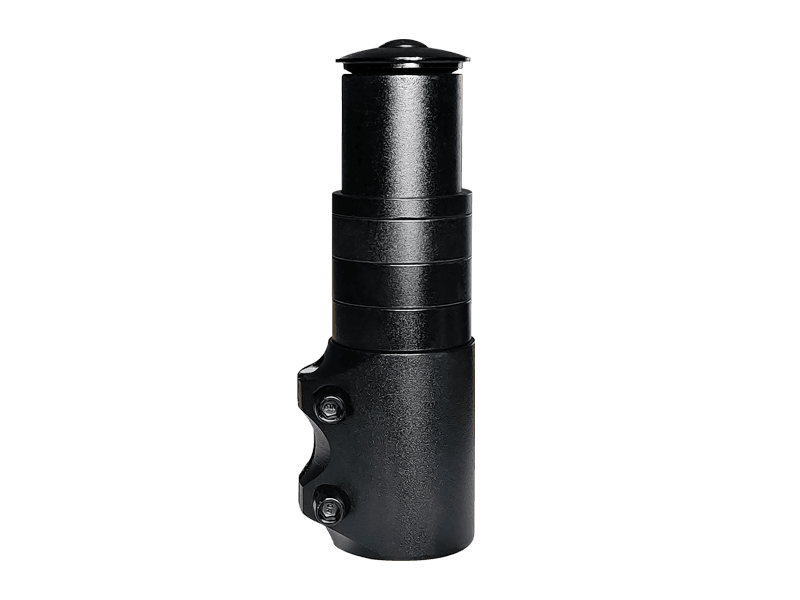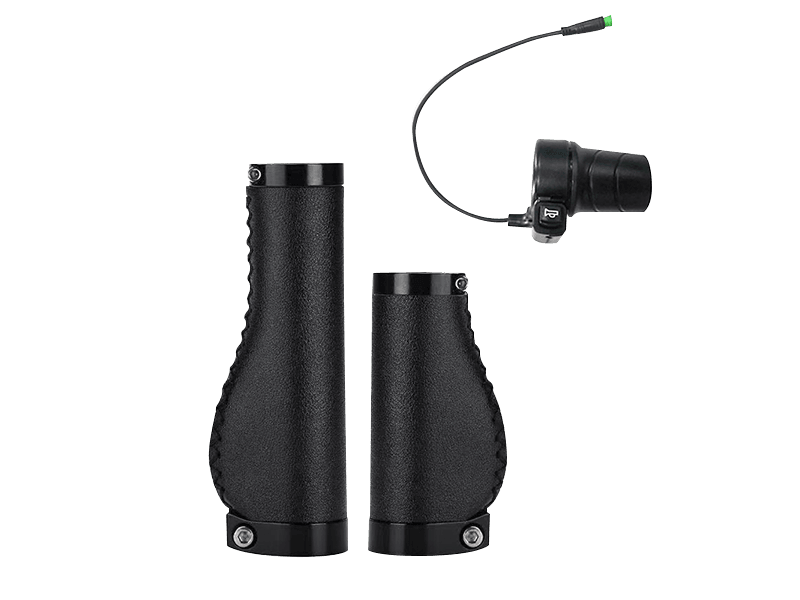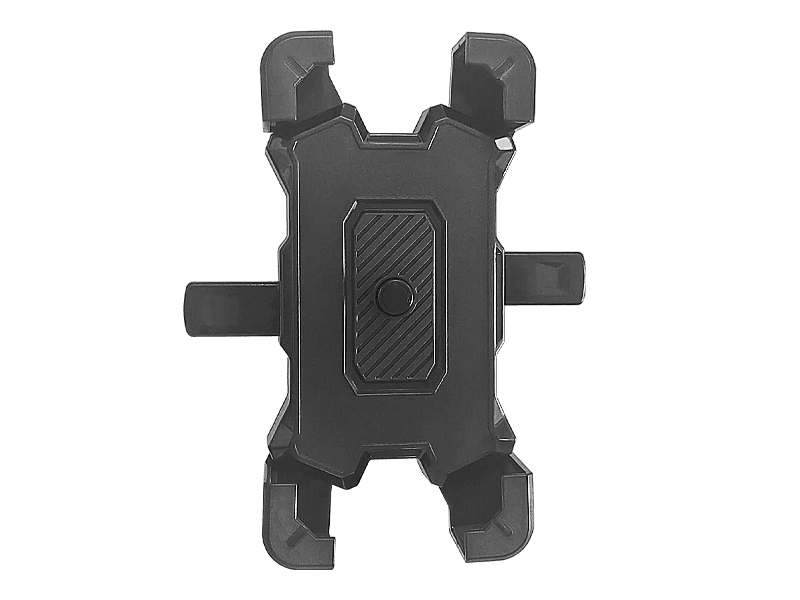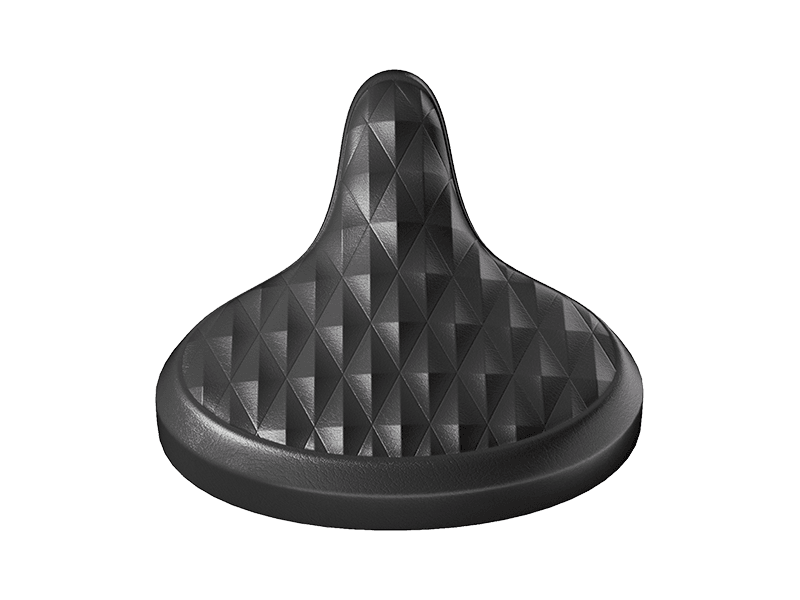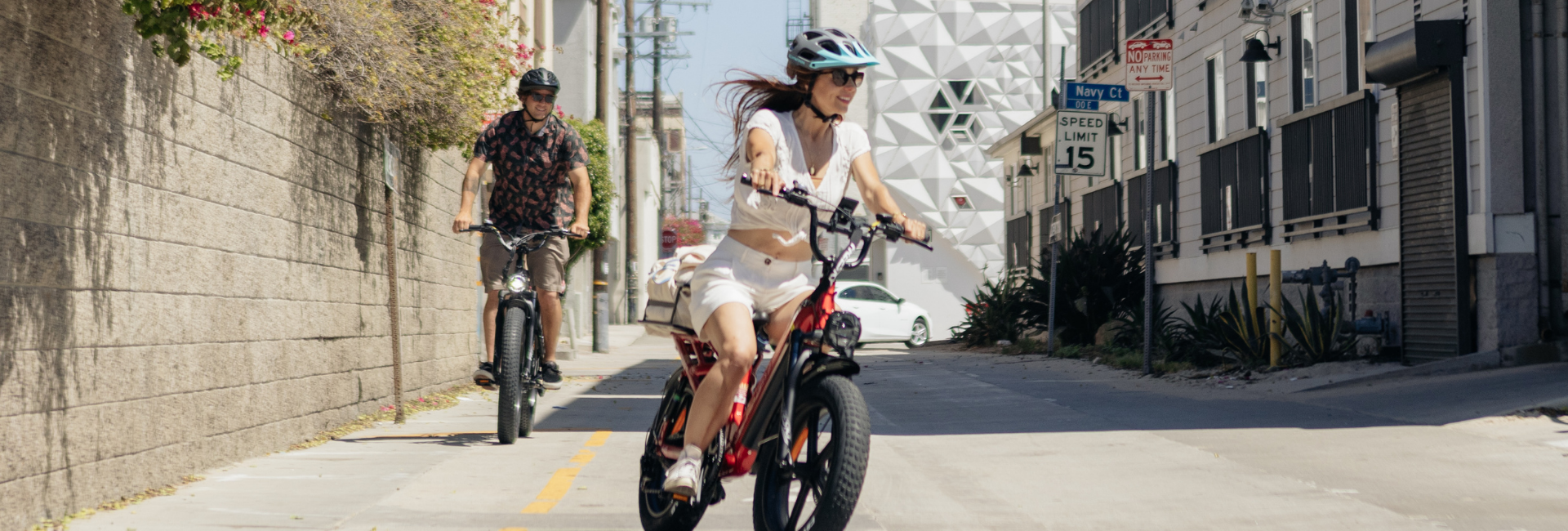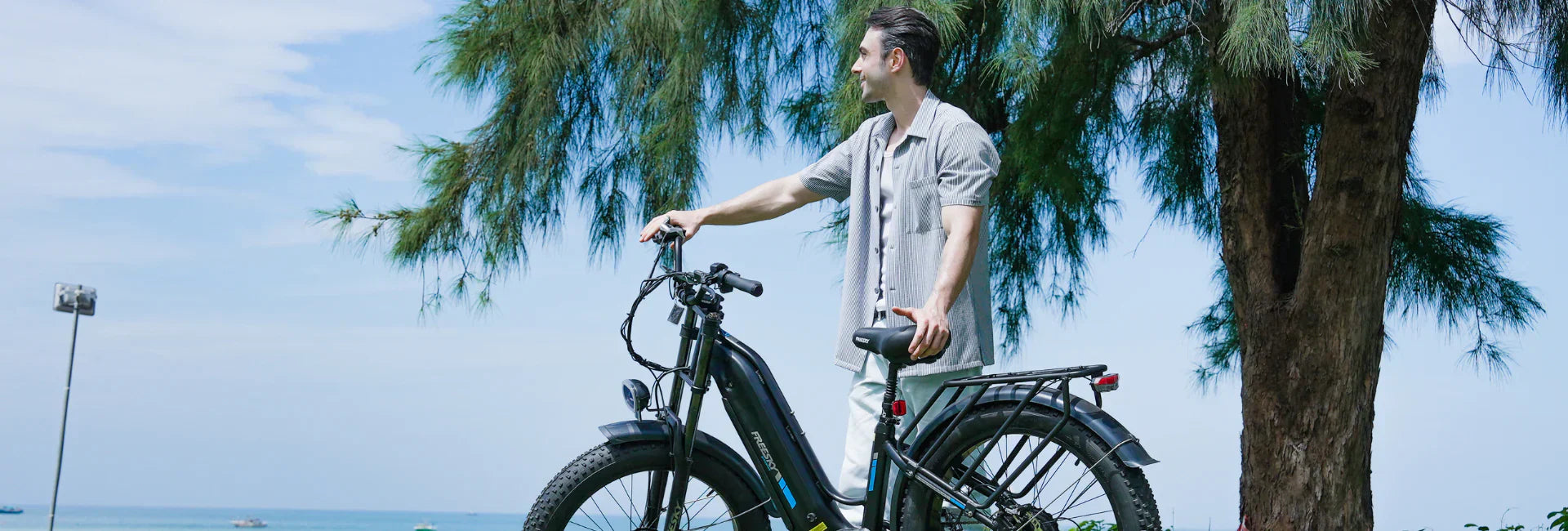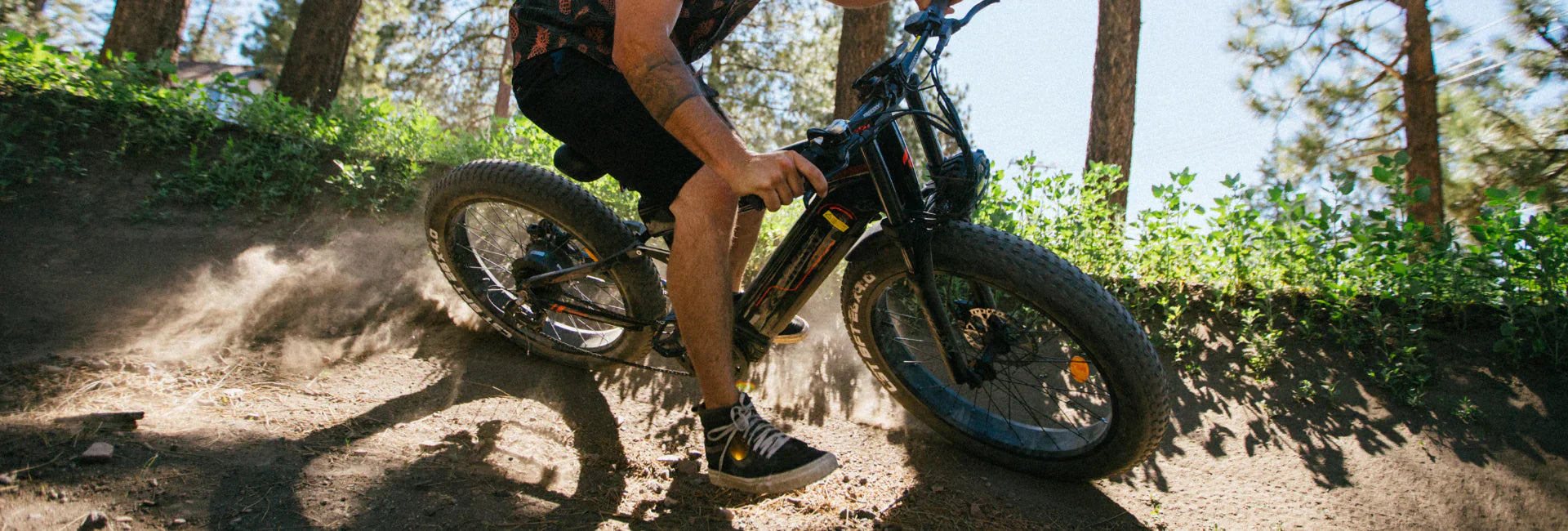5 schnelle Möglichkeiten, um Ihren Elektrofahrradrahmen fest und sicher zu halten
AUG 01, 2025
Es beginnt oft mit einem leisen Knarren. Dann folgt ein leichtes Wackeln, wenn Sie über Kopfsteinpflaster oder unebene Straßen fahren. Sie bilden es sich nicht ein – der Rahmen Ihres E-Bikes kann sich mit der Zeit tatsächlich lockern.
Die gute Nachricht ist, dass sich das Problem in den meisten Fällen durch einfache Überprüfungen und Anpassungen beheben lässt, die Sie selbst vornehmen können. Indem Sie Ihren Rahmen sichern, verbessern Sie nicht nur den Fahrkomfort, sondern sorgen auch für Sicherheit bei jeder Fahrt.
So erkennen Sie einen lockeren Rahmen
-
Knarrende Geräusche: Metallische Reib- oder Klickgeräusche beim Beschleunigen, Bergauffahren oder in Kurven.
-
Instabiles Fahrgefühl: Ein weiches oder schwankendes Gefühl beim Überqueren von Unebenheiten oder rauen Oberflächen.
-
Lose Scharniere oder Verbindungsstücke: Spürbares Spiel in Klappmechanismen oder Rahmengelenken.
-
Radfehlstellung: Wenn Vorder- und Hinterrad beim Anheben des Fahrrads nicht richtig ausgerichtet sind, kann der Rahmen verdreht oder verformt sein.
Fünf Kontrollen für einen stabilen Rahmen
1. Steuersatz und Vorbau
Wenn sich der Lenker instabil anfühlt oder beim Abbiegen klickt, ist möglicherweise der Steuersatz oder der Vorbau locker.
Was zu tun:
-
Halten Sie das Vorderrad fest zwischen Ihren Beinen.
-
Drehen Sie den Lenker. Wenn er sich unabhängig voneinander bewegt, ziehen Sie die Schrauben mit einem Inbusschlüssel fest.
-
Nur festziehen, bis es fest sitzt, und übermäßige Kraft vermeiden.
2. Sattelstützenklemme
Eine verrutschende Sattelstütze kann zu Bewegungen im hinteren Teil des Rahmens führen.
Was zu tun:
-
Lösen Sie die Klemme, stellen Sie die Sattelhöhe ein und ziehen Sie sie dann wieder fest.
-
Verwenden Sie zum präzisen Anziehen, falls verfügbar, einen Drehmomentschlüssel.
-
Tragen Sie Carbonpaste (für Carbonstützen) oder Fett (für Legierungen) auf, um ein Verrutschen zu minimieren.
3. Kurbelgarnitur und Tretlager
Knarren beim Treten deutet oft auf Spiel zwischen den Kurbelarmen oder dem Tretlager hin.
Was zu tun:
-
Testen Sie jeden Kurbelarm auf seitliche Bewegung.
-
Ziehen Sie die Kurbelschrauben mit dem richtigen Werkzeug fest.
-
Wenn das Tretlager locker oder abgenutzt ist, wenden Sie sich zur Wartung oder zum Austausch an eine Fachwerkstatt.
4. Faltgelenke (für faltbare E-Bikes)
Klappscharniere und Verschlüsse sind ständiger Belastung ausgesetzt. Schon kleine Lücken können zu Instabilität führen.
Was zu tun:
-
Klappen Sie das Fahrrad vollständig auf und sichern Sie es.
-
Überprüfen Sie, ob sich das Scharnier bewegt, und ziehen Sie die Schrauben wieder fest.
-
Bei Bedarf schmieren.
⚠️ Wenn die Verbindung nicht sicher festgezogen werden kann, wenden Sie sich an Ihren Serviceanbieter, bevor Sie wieder fahren.
5. Hinterbau und Achsbereich
Der hintere Bereich ist entscheidend für die Stabilität.
Was zu tun:
-
Stellen Sie sicher, dass die Achsmuttern oder Schnellspannhebel richtig angezogen sind.
-
Untersuchen Sie Schweißnähte auf Risse oder Anzeichen von Spannung.
-
Überprüfen Sie, ob Schaltauge und Bremshalterungen richtig befestigt sind.
Warum es wichtig ist
Ein lockerer Rahmen ist nicht nur unbequem. Wenn er nicht behandelt wird, kann er zu Folgendem führen:
-
Erhöhter Verschleiß der Komponenten.
-
Rahmenermüdung und Risse.
-
In seltenen Fällen kommt es zu einem plötzlichen Strukturversagen.
Der Rahmen Ihres E-Bikes ist sein Fundament. Regelmäßige Kontrollen sind ebenso wichtig wie die Kontrolle von Reifen und Akkustand.
So verhindern Sie ein Lösen des Rahmens
-
Monatliche Inspektion: Steuersatz, Sattelstütze, Kurbelgarnitur und Gelenke prüfen.
-
Extrapflege nach Regen oder Reinigung: Feuchtigkeit kann Korrosion und Lockerung beschleunigen.
-
Verwenden Sie die richtigen Werkzeuge: Investieren Sie in einen Inbusschlüsselsatz und einen Drehmomentschlüssel. Für regelmäßige Fahrer wird eine professionelle Wartung empfohlen.
Für langfristige Stabilität gebaut
Hochwertige Rahmen sind so konstruiert, dass sie Biegungen und Vibrationen standhalten und so eine dauerhafte Zuverlässigkeit gewährleisten. Freesky E-Bikes werden nach diesem Prinzip konstruiert – verstärkte Strukturen und präzise Fertigung sorgen dafür, dass die Rahmenintegrität auch unter anspruchsvollen Fahrbedingungen erhalten bleibt.
Abschließende Gedanken
Eine stabile Fahrt beginnt mit einem sicheren Rahmen. Mit diesen fünf einfachen Kontrollen sorgen Sie dafür, dass Ihr E-Bike sicher, reaktionsschnell und angenehm zu fahren bleibt.
Fahren Sie sicher. Fahren Sie mit Vertrauen.
FAQ: Lockerer Rahmen
1. Bedeutet jedes Knarren, dass der Rahmen locker ist?
Nicht immer. Manche Geräusche kommen vom Sattel, den Pedalen oder den Bremsen. Steuersatz, Kurbelgarnitur oder Faltgelenke sollten jedoch zuerst überprüft werden.
2. Ist das Fahren sicher, wenn sich der Rahmen instabil anfühlt?
Dies wird nicht empfohlen. Selbst kurze Fahrten können zu weiteren Schäden oder Sicherheitsrisiken führen.
3. Sind Falträder stärker betroffen?
Ja. Klappscharniere und Verschlüsse erfordern konstruktionsbedingt häufigere Kontrollen.
4. Wie oft sollte ich den Rahmen überprüfen?
Es wird empfohlen, dies einmal im Monat zu tun. Bei täglichem Fahren oder Fahrten in unebenem Gelände öfter.
5. Wie fest sollten die Schrauben angezogen werden?
Fest, aber nicht zu fest anziehen. Die Verwendung eines Werkzeugs mit Drehmomentbegrenzung ist die sicherste Option.


